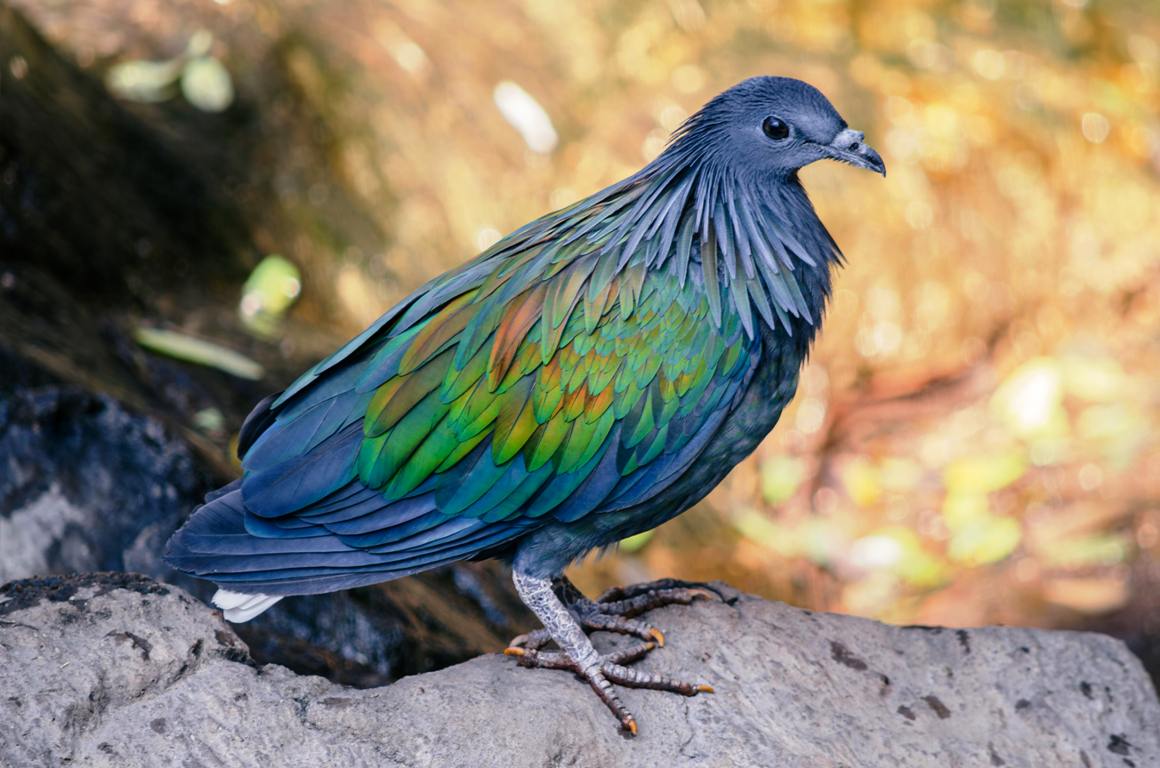The Nicobar Pigeon: The Wonder of Colors

Let’s explore one of the most attractive bird species on earth, the Nicobar pigeon. This bird, native to Nicobar Islands, is renowned for its sublime plumage that inspires bird lovers with its exquisite colors. This blog will delve into the physical characteristics, behavior, and uniqueness of this wonderful creation to inspire feelings of beauty and radiance.
Physical Characteristics
The Nicobar pigeon is a masterpiece of color and design. Its metallic green, blue, and bronze feathers, prominent on the neck and wings, create a striking contrast. Further, its white tail, red legs, and curved dark beak are distinctive features of this creature. They have deep reddish-brown eyes that add an extra touch of elegance. The Nicobar males are slightly larger and more vibrant in color. Adult pigeons can grow up to 40 centimeters in length. They are strong flyers, and can cover vast distances.
Behavior
Nicobar pigeons are social creatures. They thrive in pairs and groups, and require spacious place. They can form bond to the humans but they are relatively quiet birds. They typically remain monogamous for the breeding season. The female lays a single egg, and both parents incubate, feed, and protect the young bird.
Diet
Nicobar pigeon loves fruits, seeds, and berries. They may occasionally consume small grains. This diverse diet not only fulfills their dietary needs but contributes to their overall health and wellbeing. They are foragers, and their muscular gizzard helps them grind tough seed coats and digest hard seeds. They also consume a wider range of plant materials compared to other bird species. A balanced diet in captivity should include high-quality pigeon feed supplemented with fresh fruits and green.
Fun Facts about the Nicobar Pigeon
- Nicobar pigeon produces crop milk to feed its young. This secretion is essential for the chicks.
- Nicobar pigeons are remarkable navigators, capable of flying long distances between islands.
- They are known for their silent flight. Their wing structure minimizes noise.
- The Nicobar pigeon is a living gem as its feathers were historically used as ornaments in traditional jewelry.
Threats
Unfortunately, the population of Nicobar pigeon is declining due to deforestation. Urbanization and human activities on islands is reducing natural habitat for this lovely bird. Moreover, the climate change is another threat for them as sea level is rising and demolishing islets.
Nicobar pigeon is not just a beautiful bird; it is a living relic of avian evolution. We should do efforts to protect this amazing species preserving natural habitat and protected areas for them.
